#ampelopsis brevipedunculata
Text
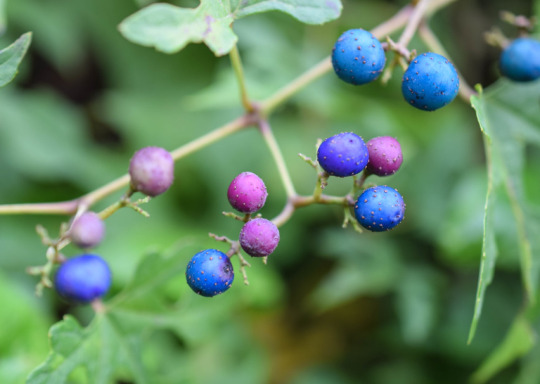

Porcelain berry (Ampelopsis brevipedunculata)
Photos by Amanda Tencza on Flickr: https://www.flickr.com/photos/tencza/
#porcelain berry#ampelopsis#ampelopsis brevipedunculata#plants#berries#colorful fruit#colorful berries#blue#purple#botanical#nature#ornamental plants
5 notes
·
View notes
Text

Porcelain berry (Ampelopsis brevipedunculata)
7 notes
·
View notes
Text
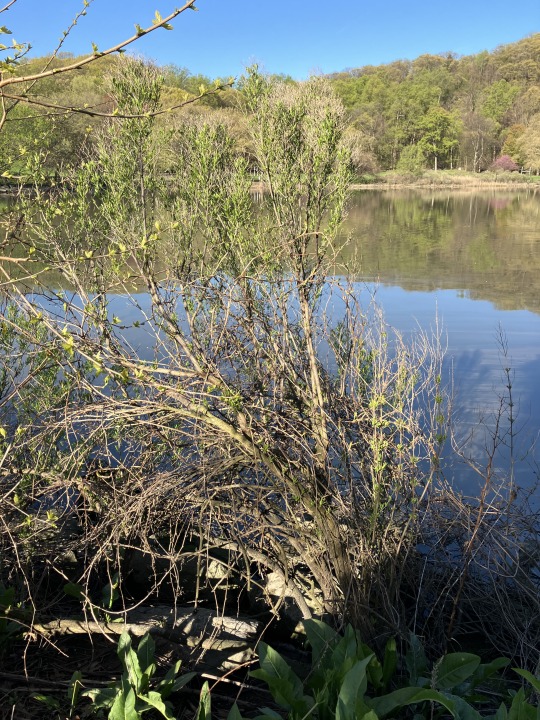
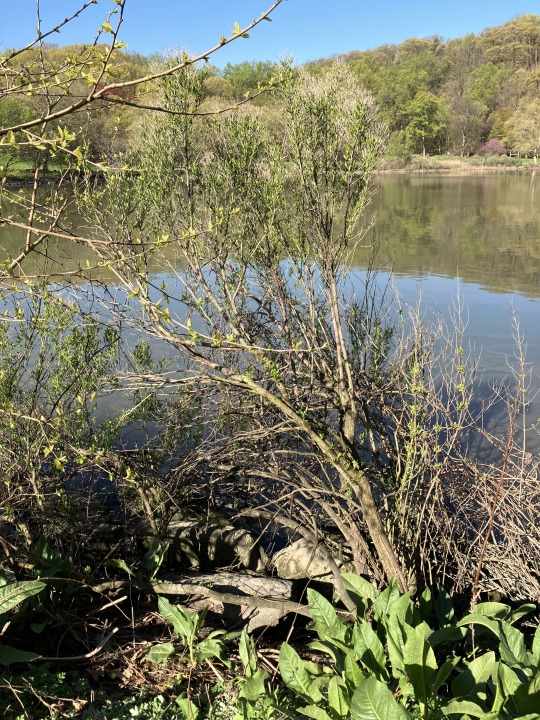
Spent my morning pruning hour at work on this groundsel bush (a native salt marsh species also known as Baccharis halimifolia) that was covered in porcelainberry (Ampelopsis glandulosa var. brevipedunculata), an invasive species of grape. Cherished mutual (of nine years! wow!) @islenskur mentioned not knowing much about the invasive species I work on so here's a little primer for anyone interested.
Porcelainberry is from eastern Asia and was imported to the United States in the late 19th century as an ornamental landscaping plant - it has since gone rogue and is all over the East Coast and has been found as far west as Iowa. The good people of the Lewis Ginter Botanical Garden in Virginia said porcelainberry is "the most pervasive of all invasive plants" they are dealing with. It's a woody vine that can grow as tall as 20 ft, can grow in just about any environment include damp and shaded areas, and has a massive root system so it's also incredibly difficult to eradicate. It grows so quickly and so prolifically that it can easily shade out other plants in the understory and it will also easily cover an entire tree and engulf it -- if you find an undisturbed thicket of porcelainberry, it is probably a monoculture as it has killed or outcompeted everything in the area. Furthermore, since it can regrow from root fragments, it cannot be composted. As high risk of an invasive species as it is, porcelainberry is still sold in the horticulture trade, although it has since been banned in Delaware.
Porcelainberry seeds are spread by birds and small mammals like squirrels that eat the small, marble-like berries that form in the summer; they're actually really beautiful and vary in colour from a robin's egg blue to a deep midnight purple. While they are edible, they taste nasty, so if you like bland berries with a somewhat stinging aftertaste and a slimy texture, these are a perfect snack. The leaves are also edible and not disgusting (I've actually used them to make dolmades aka stuffed grapes leaves and the texture was no different than cultivated grape leaves) and they look quite lovely on a cast iron fence -- zoom in on the little tendrils that it uses to cling to itself and other objects to make a lattice and quickly grow upwards. These tendrils are a big tell for identifying porcelainberry in the winter when there are no leaves, as other clinging/climbing vines like Asian bittersweet, English ivy, and poison ivy have different ways of attaching to the trees.
As much as I hate dealing with it, I have to admit that this plant is incredibly good at thriving in adverse conditions.
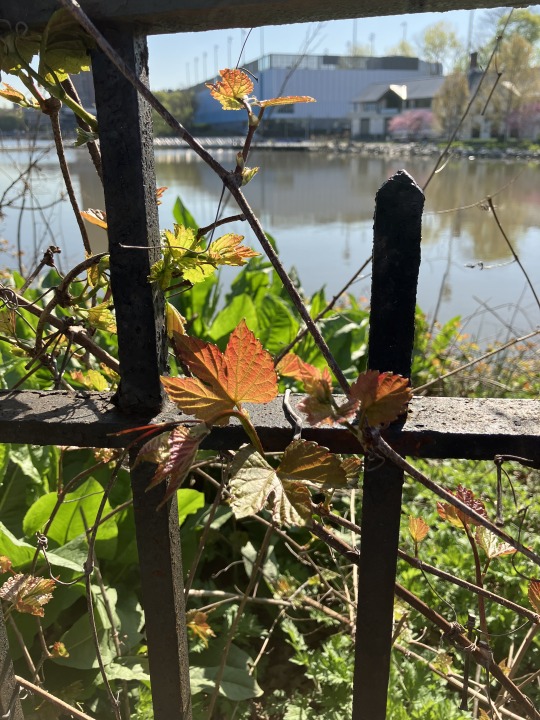

Bonus: it can be hard to see how much is removed just from before-after pictures so here’s the cleanup result:
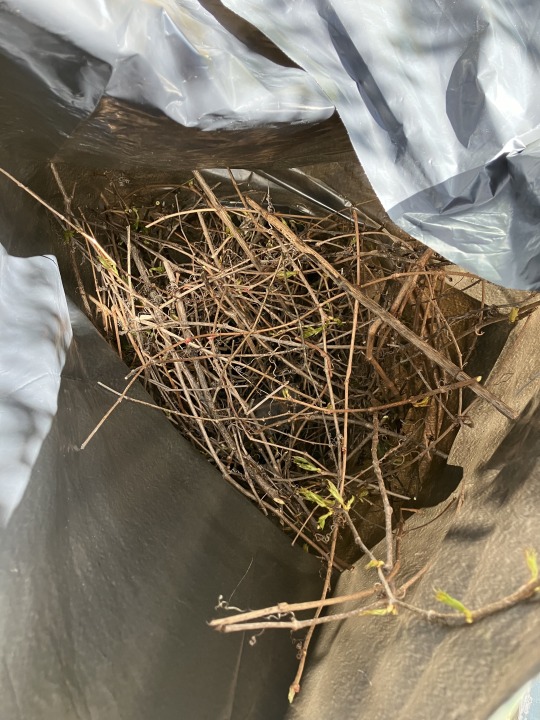
4 notes
·
View notes
Photo

crazy coloured berries / Ampelopsis brevipedunculata
#berries#colorful#photographers on tumblr#Ampelopsis brevipedunculata#Ussuri-Scheinrebe#Scheinrebe#fotoblubb#Kristian Papp#oktober17#Oktober2017
98 notes
·
View notes
Photo

Ampelopsis brevipedunculata
Porcelain Berry, Amur Peppervine, Wild Grape
And, sometimes, Creeper. But sometimes I get called that too.
(via)
#Ampelopsis brevipedunculata#Ampelopsis#Porcelain Berry#Amur Peppervine#Wild Grape#Creeper#berries#fruit#edible#technically edible#pretty#pretty plants#vine#vines#purple#blue#turquoise
20 notes
·
View notes
Photo


Porcelain vine (Ampelopsis brevipedunculata).
November 2020.
#ampelopsis#plants#berries#fruit#climbing plants#photoset#photography#agavex-photography#2020#canon eos 750d
19 notes
·
View notes
Photo

Ampelopsis brevipedunculata (a.k.a., porcelain berry) by Svetlana I on flickr.com
2 notes
·
View notes
Photo

Hog Sphinx (Darapsa myron), Fishers Island NY, July 2018.
Also known as the Virginia Creeper sphinx, caterpillars of these species can be found on vines in the grape family, which include Virginia creeper and peppervine. As adults, the moths take in nectar from flowers, and are active from dusk onward, where they often come to lights. The coloration of their wings at rest allow the moths to blend in with foliage, often as discolored leaves on a grapevine, for example.
An interesting note about the moth’s host plant use. Porcelainberry or Amur peppervine (Ampelopsis brevipedunculata) is an invasive species that has become dominant in forest edges throughout the eastern US, and it has been shown that our native hog sphinx can feed on it, since it is a plant species in the grape family and is recognized as a host plant. However, the sphinx caterpillars do not seem to do well on it, nor have populations of hog sphinx increased in areas where porcelainberry has become dominant. This suggests that the invasive plant does more harm than good for even the insects that can use it as a food source, and it removing the invasive would benefit wildlife far better than leaving it behind.
At least one generation in New England, with adults as early as June. Caterpillars overwinter as pupa.
28 notes
·
View notes
Photo

Porcelain berry (Ampelopsis brevipedunculata var. glandulosa).
November 2018.
The berries really are that colour; this is unedited. I hear this plant is an invasive weed in North America, yet I’ve never seen it grown by anyone else in the UK despite its tolerance of cold and shade.
#it's as good a fast climber as virginia creeper#plants#my plants#vitaceae#ampelopsis#porcelain berry#climbing plants#agavex
2 notes
·
View notes
Photo
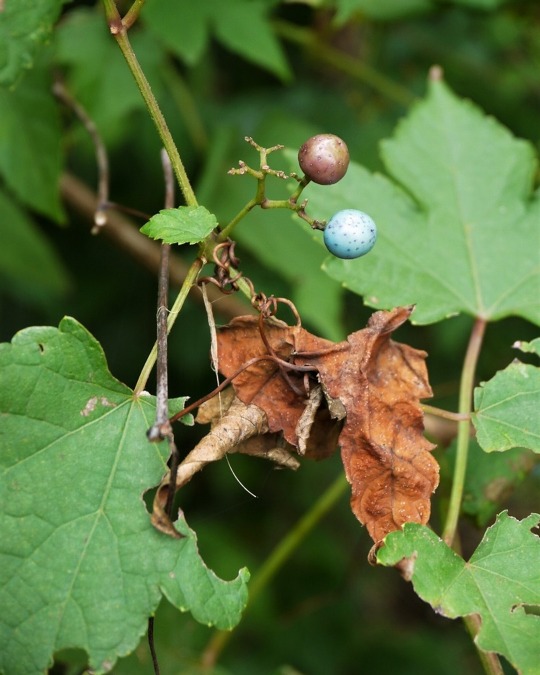
gorgeous porcelain berries in my october country. (Ampelopsis glandulosa var. heterophylia/brevipedunculata) 野蒲萄は神無月の「玉」。 #PorcelainBerry #Creeper #WeedyPlant #ノブドウ #野蒲萄 #ポーセリンベリー #野趣 https://www.instagram.com/p/B4NBIyrnGTJ/?igshid=1nkal0aocu2c3
0 notes
Photo

Ampelopsis glandulosa var. brevipedunculata; porcelain berry, Amur perrervine. What a beautiful leaf! #vitaceae #ampelopsisglandulosa #porcelainberry #asianplants #invasivespecies #lamacchinafissa #readingretreatsinruralitaly (presso La Macchina Fissa) https://www.instagram.com/p/BxPENQ3BaGh/?utm_source=ig_tumblr_share&igshid=akwm6dwtelyh
#vitaceae#ampelopsisglandulosa#porcelainberry#asianplants#invasivespecies#lamacchinafissa#readingretreatsinruralitaly
0 notes
Photo








Porcelain-berry; Amur Peppervine; Wild Grape (Ampelopsis brevipedunculata) syn. Ampelopsis glandulosa var. brevipedunculata
Mature Size - (15-25′ x 15-25′)
Shape and Form - Woody, deciduous, tendril-climbing vine which is somewhat similar in habit to wild grape vines.
Growth Habit - Vigorous growth. Stems climb by tendrils.
Leaves - Features mostly 3-lobed, deep green leaves (to 5" long).
Flowers - Clusters (cymes) of non-showy, greenish flowers appear in the leaf axils in July. Flowers are important source for pollinators.
Fruit/Seeds - Flowers give way in fall to showy clusters of rounded-to-oval, pale lilac-blue fruits (1/4" diameter) which mature to brighter and deeper shades of amethyst to porcelain blue. Fruits attract birds and squirrels.
Bark - Stems are thin, green, and slightly zig-zag the first year, becoming brown, semi-woody, and somewhat exfoliating by the second year. Stems climb not by twining, but rather by tendrils twisting around a supportive structure. Stems may also run along the ground, over logs and rocks, and entangle upon other stems, making them very hard or impossible to separate.
Region - Native to temperate regions of northeastern Asia. Has naturalized in much of eastern North America, to the Great Lakes region.
Hardiness Zones - (4-8)
Habitat/Growing Conditions - Grows in open sites, and is often associated with disturbed or degraded landscapes. It invades streambanks, pond margins, forest edges and other disturbed areas. Easily grown in average, medium, well-drained soil in sun or shade. Adapts well to most soils, including sandy or rocky ones. Avoid wet, poorly drained soils, however. Best flower and subsequent fruit production occur in full sun. Needs a support structure upon which to grow, including fences, arbors, walls, trellises, porches or other structures. May also be grown without support along the ground to cover old stumps or rock piles.
Plant Community - Spontaneous Urban Growth
Eco-indicator - NA
Other info - Flowers on new growth, so this vine may be cut to the ground in late winter (optional) to control growth.
Porcelain Berry is closely related to grape vines. Its flowers are attractive to pollinators, and its berries are eaten by a number of birds and squirrels.
An invasive species, often problematic in North America. Most problematic along coastal areas. The thick mats formed by this climbing vine can cover and shade out native shrubs and young trees. It spreads very quickly since birds and mammals eat the fruit and disperse the seeds.
Current Nursery Status and Availability - Most widely used pine in the northeast. Easily available in nursery trade, as are several cultivars. Dirr lists 3 selections of this species in his 6th edition woody plants manual
‘Citrulloides’ - Leaves are deeply incised, 5-lobed, with typical green flowers and bluish fruit.
‘Elegans’ - A rather interesting type with slightly smaller leaves, variegated with white. Greenish white and tinged with pink when young. Not as vigorous as species, and would be a good choice for locations where the species is too aggressive.
var. maximowiczii (syn. A. glandulosa) - Leaves more deeply lobed, 3-5 lobes. Interesting textural difference compared to species. Incredibly vigorous, which can be a problem.
http://www.missouribotanicalgarden.org/PlantFinder/PlantFinderDetails.aspx?taxonid=287549&isprofile=0&
https://hvp.osu.edu/pocketgardener/source/description/am_ulata.html
https://www.fs.fed.us/database/feis/plants/vine/ampbre/all.html
https://plants.ces.ncsu.edu/plants/all/ampelopsis-brevipedunculata/
Dirr - “Manual of Woody Landscape Plants”
Wessels - “Reading the Forested Landscape”
#zone4#zone5#zone6#zone7#zone8#showy fruit#blue fruit#rapid growth rate#tolerates poor soils#high wildlife value#groundcover#spontaneous urban growth
0 notes
Photo


Porcelain vine (Ampelopsis brevipedunculata).
October 2020.
14 notes
·
View notes
Photo



Ampelopsis brevipedunculata, Porcelain Berry
Community: Spontaneous Urban Growth
Native Region: Northeastern Asia, introduced to eastern United States into Midwest
Mature Size: height: 15-20′, spread: 15-20′
Habitat: well-drained, average soil, but adapts well to sandy or rocky soils
Hardiness Zone: 4 to 8
Leaves: deep green
Flowers: greenish
Fruit: pale lilac-blue fruit that mature to brighter and deeper shades of amethyst to porcelain blue
The buds, leaves, and stems can be eaten by humans cooked. The fruit can be eaten raw or cooked, but is not super palatable.
Buds: humans
Foliage: humans
Fruit: birds, white-tailed deer, humans
Stems: humans
Seed Dispersal: birds, mammals, water
Collect Seeds: fall
0 notes
Photo










My October 2017 In Pictures - Berries.
(Click on a picture for a close-up & see descriptions 1-10 below.)
1. Tues 03rd October 2017 at 11:21. Mountain Ash red berries (Rowan) & Hythe Marina clock, Hythe, Hampshire.
2. Tues 03rd October 2017 at 11:30. Firethorn orange berries (Pyracantha), Hythe Marina, Hampshire.
3. Mon 09th October 2017 at 14:57. White berries (Sorbus cashmiriana), Botanic Garden, Oadby, Leicestershire.
4. Mon 09th October 2017 at 15:10. Red berries, Botanic Garden, Oadby, Leicestershire.
5. Mon 09th October 2017 at 15:41. Red berry (variegated Cotoneaster), Botanic Garden, Oadby, Leicestershire.
6. Mon 09th October 2017 at 16:42. Porcelain Berry multicoloured berries (Ampelopsis brevipedunculata), Botanic Garden, Oadby, Leicestershire.
7. Mon 09th October 2017 at 16:50. Common Spindle pink berries (Euonymus Europaeus), Botanic Garden, Oadby, Leicestershire.
8. Thurs 12th October 2017 at 16:33. Strawberry Tree red berry fruits (Arbutus unedo), The Grove Garden, Hythe, Hampshire.
9. Sat 14th October 2017 at 16:39. Brown berries, St John’s Street, Hythe, Hampshire.
10. Sat 28th October 2017 at 10:44. Beach Rose red hips (Rosa rugosa), Hythe foreshore, Hythe, Hampshire.
To read about My October 2017 In Pictures - Berries, click on the link:-http://susanvale.blogspot.co.uk/2017/11/my-october-2017-in-pictures-berries.html
To read about Hythe, Hampshire, click on the link below:-https://en.wikipedia.org/wiki/Hythe,_Hampshire
To read about the white berries (Sorbus cashmiriana), click on the link:-https://en.wikipedia.org/wiki/Sorbus_cashmiriana
To read about the Botanic Garden, Leicestershire, click on the link:-https://en.wikipedia.org/wiki/University_of_Leicester_Botanic_Garden
To read about the Porcelain berry, click on the link below:-https://en.wikipedia.org/wiki/Ampelopsis_glandulosa_var._brevipedunculata
To read about the Common Spindle (Euonymus Europaeus), click on the link:- https://en.wikipedia.org/wiki/Euonymus_europaeus
To read about the Strawberry tree (Arbutus unedo), click on the link:- https://en.wikipedia.org/wiki/Arbutus_unedo
To read about the Beach Rose hips (Rosa rugosa), click on the link:-https://en.wikipedia.org/wiki/Rose_hip
0 notes
Photo


Porcelain Berry - Ampelopsis brevipedunculata
Plant community - Urban Growth
Native region - Introduced to Northeastern and Midwestern United States
Mature size - 16 ft tall and 32 feet wide
Preferred growing conditions - Rich and drained soil
Hardiness zone - 5-9
Leaf color - Green
Flower color - Yellow
https://www.nrcs.usda.gov/Internet/FSE_DOCUMENTS/nrcs142p2_010864.pdf
https://plants.usda.gov/core/profile?symbol=AMBR7
https://www.ndsu.edu/pubweb/chiwonlee/plsc211/student%20papers/articles06/tara%20grimes/tgrimes.html
0 notes